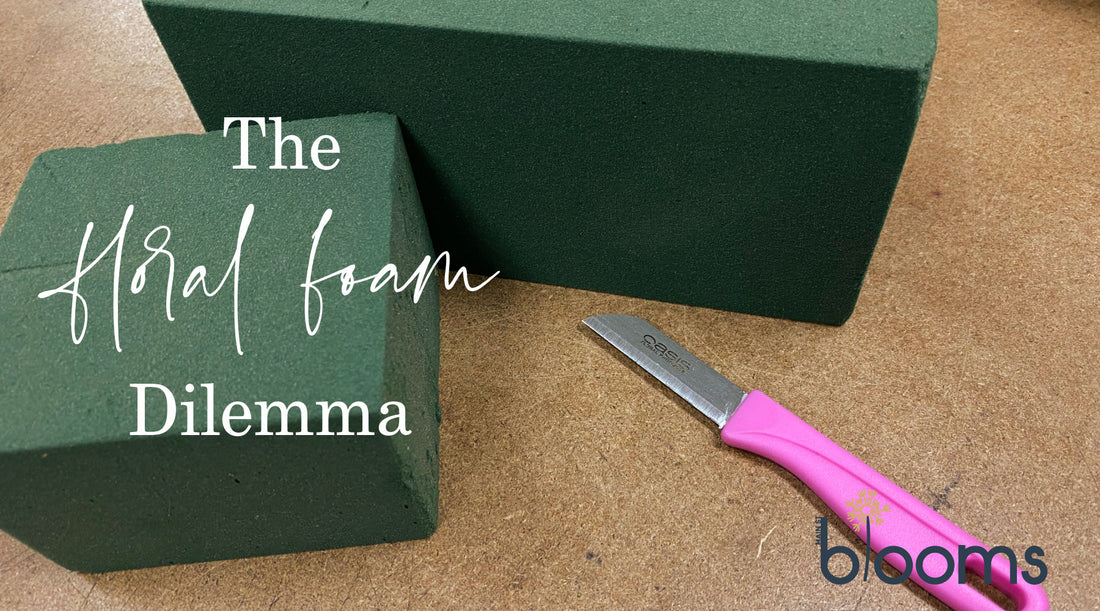
The Floral Foam Dilemma
Florist foam, also known as floral foam or Oasis, has long been a staple in the floral industry. This green, spongy material is prized for its ability to hold water and support stems, allowing florists to create intricate and long-lasting arrangements. However, its convenience comes at a significant environmental cost. As awareness of sustainability issues grows, so does the responsibility of both consumers and florists to make more eco-friendly choices.
At Main St Blooms, we are continuing our efforts towards becoming a more sustainable florist, by researching viable alternatives to cut out unsustainable practices such as the use of floral foam in our Bloom boxes. Whilst doing so, we would also like to educate & guide our customers through this process and ask for their help to drive this change within the floral industry.
Whilst we endeavour to find a viable alternative amongst the current products available to us, the easiest, simplest and most sustainable choice as a consumer is to choose a glass vase when ordering your blooms. Our glass vases can then be either reused or repurposed by you at home, returned to us in store to reuse or placed in your recycle bin so they don't contribute to landfill.
The Environmental Impact of Florist Foam
Florist foam is a single-use plastic made from phenol-formaldehyde. It’s non-biodegradable, meaning it doesn’t break down naturally in the environment. When discarded, florist foam can break into microplastics, which are harmful to marine and terrestrial life. Additionally, the chemicals used in its production can be toxic, posing health risks to those who handle it frequently.
The production and disposal of florist foam contribute to pollution and carbon emissions, exacerbating the already critical issue of plastic waste. With millions of blocks of florist foam used worldwide each year, the cumulative impact is substantial.
The Power of Customer Choice
As with many environmental issues, consumer behaviour plays a crucial role in driving change. Customers have immense power to influence the market through their purchasing choices. By opting not to buy floral arrangements made with florist foam, consumers send a clear message to florists and the broader industry that sustainability matters.
When customers prioritise eco-friendly products, businesses are incentivised to adopt greener practices. This shift can lead to a broader industry transformation, where sustainable alternatives become the norm rather than the exception. The shift away from florist foam is a crucial step towards more sustainable floral practices.
The power lies in the hands of both florists and consumers alike. By choosing sustainable alternatives and making informed decisions, we can collectively reduce the environmental impact of floral arrangements. As the saying goes, every small action contributes to a larger change. Let's choose to make a difference, one flower at a time.
To learn more about floral foam, follow the link to the sustainable floristry website where there is a wealth of information Floral foam – the facts
